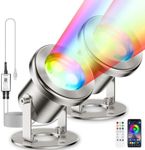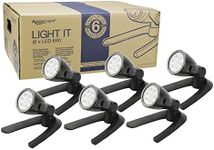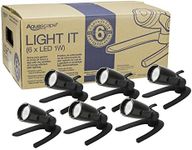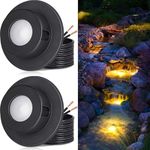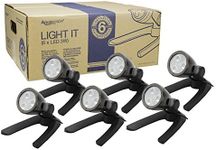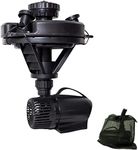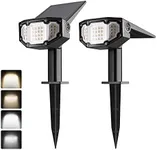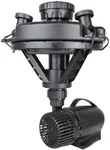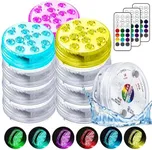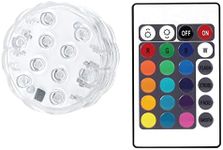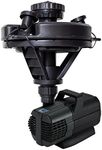Buying Guide for the Best Led Pond Lights
Choosing the right LED pond lights can transform your pond into a stunning nighttime feature. When selecting LED pond lights, it's important to consider various specifications to ensure you get the best fit for your needs. Here are some key specs to look out for and explanations to help you make an informed decision.Brightness (Lumens)Brightness, measured in lumens, indicates how much light the LED pond light emits. This is important because it determines how well your pond will be illuminated. Lower lumens (under 200) are suitable for subtle, ambient lighting, while higher lumens (200-600) are better for more pronounced illumination. If you want your pond to be a focal point, opt for higher lumens. For a more relaxed, ambient feel, lower lumens will suffice.
Color TemperatureColor temperature, measured in Kelvins (K), describes the color of the light emitted. This is important for setting the mood and aesthetic of your pond. Lower color temperatures (2000K-3000K) produce a warm, yellowish light, ideal for creating a cozy and inviting atmosphere. Higher color temperatures (5000K-6500K) emit a cool, bluish light, which can make your pond look more modern and vibrant. Choose a color temperature based on the ambiance you want to create.
Waterproof Rating (IP Rating)The waterproof rating, indicated by an IP (Ingress Protection) code, tells you how well the lights are protected against water and dust. This is crucial for pond lights as they will be exposed to water. An IP68 rating means the lights are completely waterproof and can be submerged in water, making them ideal for underwater use. An IP65 rating indicates the lights are water-resistant but not suitable for submersion. Choose an IP rating based on whether you need the lights to be fully submerged or just resistant to splashes.
Power SourceLED pond lights can be powered by solar energy, batteries, or direct electrical connection. This is important for convenience and installation. Solar-powered lights are eco-friendly and easy to install, but they depend on sunlight and may not be as bright. Battery-powered lights offer flexibility but require regular battery changes. Direct electrical connection provides consistent power but may require professional installation. Choose a power source based on your preference for ease of use and maintenance.
AdjustabilityAdjustability refers to the ability to change the direction and angle of the light. This is important for customizing the lighting effect in your pond. Fixed lights provide a steady beam in one direction, while adjustable lights allow you to direct the light where you need it most. If you want to highlight specific features or create dynamic lighting effects, opt for adjustable lights. For general illumination, fixed lights may be sufficient.
DurabilityDurability indicates how well the lights can withstand outdoor conditions, including exposure to water, weather, and physical impact. This is important for ensuring the longevity of your pond lights. Look for lights made from high-quality materials like stainless steel or durable plastic, and check for features like UV resistance and impact resistance. Choose durable lights to ensure they last longer and require less maintenance.
